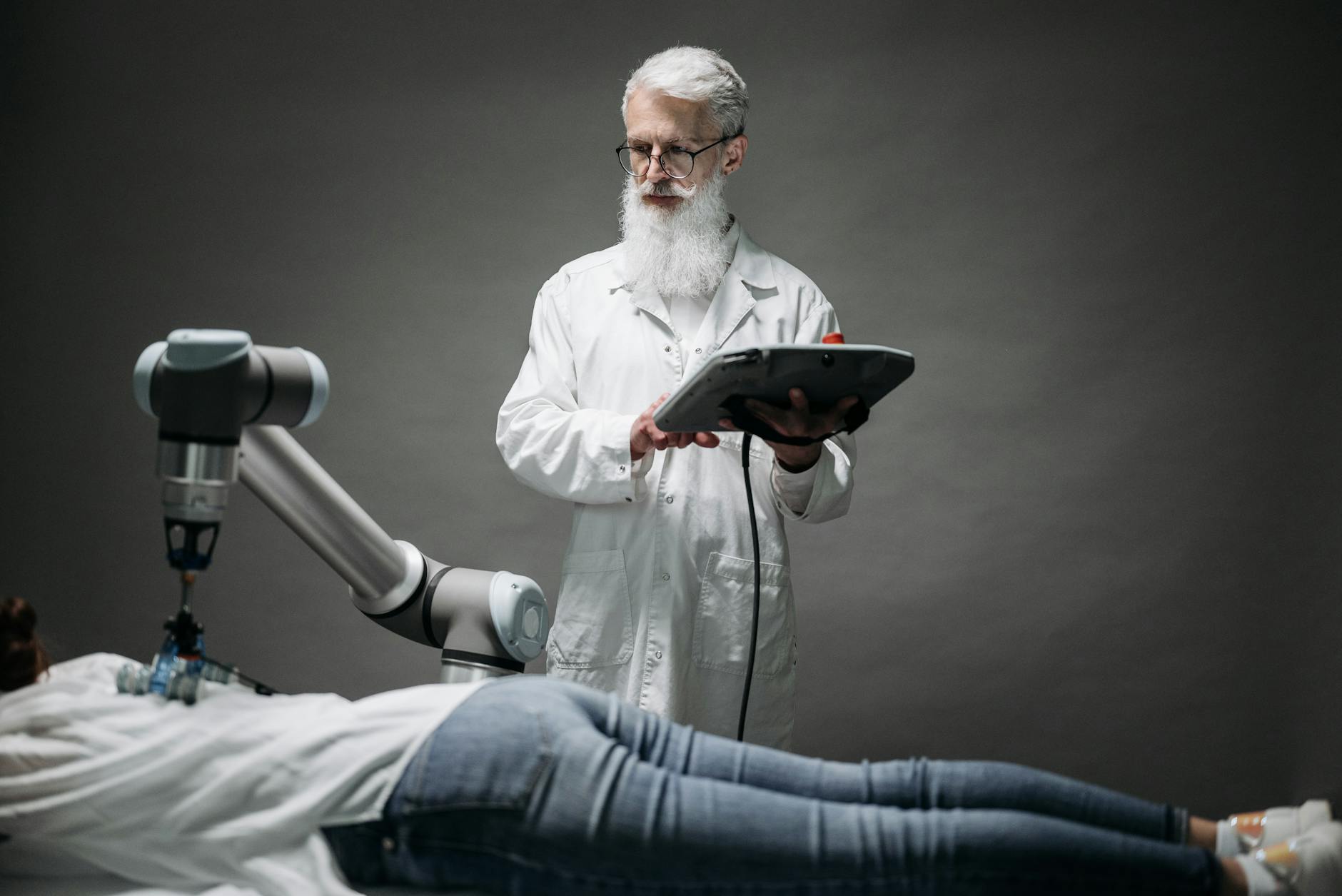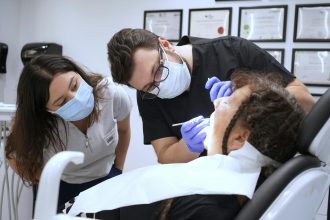AI Diagnostics: Reimagining Patient Care in UAE Hospitals
AI diagnostics is rapidly reshaping healthcare worldwide, and the United Arab Emirates (UAE) is at the forefront of adopting machine‑learning tools to improve diagnostic accuracy, reduce waiting times, and enhance patient outcomes. With government‑backed initiatives such as the UAE Vision 2021 and the National Innovation Strategy 2031, AI integration in medical imaging, pathology, and electronic health records has become a strategic priority for the country’s hospitals. In this feature, we explore why AI diagnostics is a “must‑have” innovation, examine leading UAE hospitals that have embraced this technology, and outline the regulatory framework that ensures safe, ethical, and effective deployment.
—
The Rise of AI Diagnostics in the UAE
The UAE Ministry of Health and Prevention (MOHAP) has highlighted AI as a cornerstone of the Health Transformation Program, aiming to make the kingdom one of the leading digital health hubs by 2030. The Dubai Health Authority’s (DHA) Smart Health Initiative and the Abu Dhabi Health Services Company (SEHA) both invest heavily in AI solutions that streamline diagnostics across their network of hospitals and primary care centers.
Key drivers for AI adoption in UAE hospitals include:
– Population Growth and Aging – The UAE’s population is projected to reach 12 million by 2030, with an increasing burden of chronic diseases such as diabetes, hypertension, and cancer. AI can help detect these conditions early.
– Radiology Overload – Over 43% of radiology reports in the UAE undergo second readings, indicating a high prevalence of misinterpretation or missed abnormalities. AI‑assisted imaging reduces this burden.
– Talent Shortage – Like many Gulf countries, the UAE faces a scarcity of specialized medical professionals. AI augments the workforce, enabling clinicians to focus on complex cases.
—
Leading Hospitals Pioneering AI Diagnostics
| Hospital | AI Application | Impact |
|———–|—————-|——–|
| Cleveland Clinic Abu Dhabi | AI‑powered chest X‑ray analysis (Luminos) | 30% faster report turnaround, reduces pulmonary oedema misdiagnosis |
| Dubai Hospital (DTCM‑managed) | AI‑driven pathology image analysis for biopsy interpretation | 15% increased diagnostic accuracy in breast cancer grading |
| Mediclinic City Hospital (Dubai) | AI‑assisted ECG interpretation and arrhythmia detection | 20% reduction in missed arrhythmia cases |
| Al Zahra Hospital Dubai (KHDA accredited) | Radiomics‑based tumour profiling using machine‑learning | Enables precision oncology protocols, tailored chemotherapy |
| Sheikh Shakhbout Medical City (Abu Dhabi) | Nodule detection AI for low‑dose CT scans | Decreases false positives by 25% |
Cleveland Clinic Abu Dhabi demonstrates a full-loop AI solution that ingests chest X‑ray images, flags abnormalities in under 60 seconds, and feeds findings automatically into the radiology information system. The system was validated in a 2021 study published by the Journal of the American College of Radiology, showcasing a 95% sensitivity in detecting cardiomegaly and pleural effusion.
Dubai Hospital integrated an AI platform by PathAI, which analyzes histopathology slides for carcinoma tissues. The pilot phase showed a 12% increase in inter‑observer concordance. The AI results are not standalone; rather, they appear as “suggestions” that pathologists review, ensuring clinical oversight remains paramount.
Mediclinic City Hospital uses the HeartCheck AI Engine that explores ECG traces for atrial fibrillation and other arrhythmogenic patterns. The system’s predictive accuracy aligns with the European Society of Cardiology guidelines on digital ECG analysis.
—
Why AI Diagnostics is a Must‑Have Innovation
1. Improved Accuracy
Machine‑learning models trained on millions of imaging datasets can detect subtle patterns invisible to the human eye. These models reduce diagnostic errors, particularly in high‑volume settings like emergency departments.
2. Rapid Turnaround
AI can process and flag images in seconds, whereas a radiologist typically takes minutes to hours. Faster results translate into quicker treatment decisions, especially critical in trauma or cancer care.
3. Consistent Quality
Human readers vary in fatigue, experience, and subjective interpretation. AI delivers a level of consistency that helps standardize care across the UAE’s multi‑sectoral health system.
4. Cost Savings
By reducing the need for repeat imaging and shortening workflow, AI diagnostics can lower overall healthcare expenditure. The UAE Ministry of Health calculated that AI could result in a 10% cost reduction for imaging services over five years.
5. Scalable Workforce
With a physician‑to‑nurse ratio of 1:1.9 across UAE hospitals, AI assists in managing workload, allowing clinicians to focus on patient interaction rather than data triage.
—
Regulatory Landscape and Ethical Safeguards
The UAE’s approach to AI in healthcare is guided by a combination of national strategies and sector‑specific regulatory bodies:
– UAE National AI Strategy 2031 – Outlines the ethical use of AI across all sectors with a focus on fairness, accountability, and transparency.
– Dubai Health Authority (DHA) – Provides guidelines for medical software approval, emphasizing validation, cybersecurity, and data privacy.
– Ministry of Health and Prevention (MOHAP) – Mandates evidence‑based reporting for AI tools intended for clinical use.
– Khalifa University & Dubai Health Authority’s AI Ethics Committee – Oversees research ethics for algorithmic development, ensuring patient data is anonymized and secure.
Stakeholders must submit:
1. Technical Documentation – Architecture, training data sources, validation studies.
2. Clinical Validation – Peer‑reviewed performance metrics (sensitivity, specificity, AUC).
3. Cybersecurity Assessment – Compliance with ISO 27001 and Dubai’s Data Protection Law (PDPA‑2021).
4. Post‑market Surveillance Plan – Continuous monitoring for adverse events or bias.
The process culminates in a Medical Device Type A or Type C classification per DHA Medical Device Regulations, depending on risk level. Once approved, hospitals can integrate AI systems into their Picture Archiving and Communication Systems (PACS), Electronic Medical Records (EMRs), and Digital Health Platforms.
—
Integration Workflow: From Data to Diagnosis
A typical AI diagnostic workflow in a UAE hospital follows these stages:
– Data Acquisition
Images from CT, MRI, X‑ray, or pathology slides are captured via departmental scanners. All data are automatically transferred to a secure cloud environment (e.g., UAE’s Dubai Digital Health Cloud) with end‑to‑end encryption.
– Pre‑processing
Algorithms standardise image resolution and contrast. In pathology, slide images undergo tiling and colour normalisation to minimise batch effects.
– Inference Engine
The AI model, often a convolutional neural network (CNN), processes the image and outputs diagnostic labels, segmentation masks, or probabilistic heat‑maps.
– Human‑in‑the‑Loop Review
Radiologists or pathologists examine AI‑generated outputs. Real‑time dashboards enable clinicians to “accept,” “modify,” or “override” AI suggestions.
– Result Integration
Final reports, embedded with AI confidence scores, are added to the EMR. The system may trigger alerts if the model flags a potentially life‑threatening finding.
—
Case Study: Rapid SARS‑CoV‑2 Chest CT Screening
During the COVID‑19 pandemic, Dubai Hospital deployed an AI‑assisted chest CT scanner to triage patients quickly. The system, developed in partnership with an AI start‑up from Abu Dhabi, flagged ground‑glass opacities with 90% sensitivity and 85% specificity. As a result, the hospital reduced diagnostic waiting times from an average of 3 days to 12 hours. The initiative received a commendation from the Dubai Health Authority for digital health excellence.
—
Patient Perspectives and Trust
Patient acceptance of AI diagnostics hinges on transparency and perceived safety. UAE hospitals have adopted several best practices:
– Clear Consent Forms
Patients consent to AI involvement explicitly, with options to opt‑out of data usage in AI training.
– Educational Materials
Infographics in both Arabic and English explain how AI works, its benefits, and how it complements human expertise.
– Real‑World Transparency
Workshops and webinars—often hosted by hospital societies—invite patients to view AI dashboards and ask clinical staff questions.
Despite high literacy levels among expatriates and locals, the United Nations Development Programme (UNDP) notes that digital literacy may vary. Thus, offering phone‑based explanations or in‑hospital kiosks supports inclusivity.
—
Future Directions: AI‑Integrated Precision Medicine
The UAE’s strategic emphasis on precision medicine aligns closely with AI diagnostics. Upcoming initiatives include:
– Genomics‑Driven AI Models
Integrating next‑generation sequencing data with imaging to predict treatment response in oncology.
– Wearable‑Sensing AI
Using Oura rings and Apple Watch data in EMS scenarios for AI‑driven triage of critical patients.
– Real‑Time Population Health Dashboards
Aggregating anonymised AI diagnostic outputs to monitor disease outbreaks or chronic disease burden at the emirate level.
—
The Bottom Line
AI diagnostics has transcended theoretical application to deliver tangible clinical benefits in UAE hospitals. From faster, more accurate imaging analysis to streamlined pathology workflows, these technologies consistently improve patient care while aligning with nationalHealth priorities and regulatory safeguards. As the UAE continues to invest in digital infrastructure, AI diagnostics will remain a pivotal component of the kingdom’s healthcare evolution.
—
Prepared by the Australian‑based journalistic team at Certidor.com. For further reading, consult the Dubai Health Authority’s AI Ethics Guidelines, MOHAP’s Medical Device Regulations, and published case studies from leading UAE hospitals.









